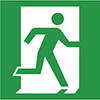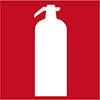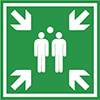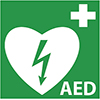Instructions for visitors
Safety information
For your safety, when visiting government premises please observe the instructions set out below. CCTV recording systems are in use throughout government premises.
- A visitor badge must be worn at all times and handed back at the end of your visit.
- You must be accompanied by your host at all times, except when using the conference centre. Do not photograph the security systems.
- You must ensure that all information and data is securely handled and stored during your visit.
- Confidentiality and secrecy obligations must be observed at all times.
- Smoking is prohibited in all government premises.
- Do not leave any bags unattended.
Safety signs in government premises






In an emergency, dial 112
Use the emergency number in the event of a real emergency, i.e. if someone’s life, health, property or the environment is at risk or in danger, or if you have reason to believe this to be the case.
When making an emergency call, state calmly and clearly:
- Your name and location
- What has happened
- Where the incident has occurred
- Whether anyone is hurt or in danger
Do not end the call before you have been given instructions to do so. After making an emergency call, notify the Government Security Control, tel. +358 9 160 24 111